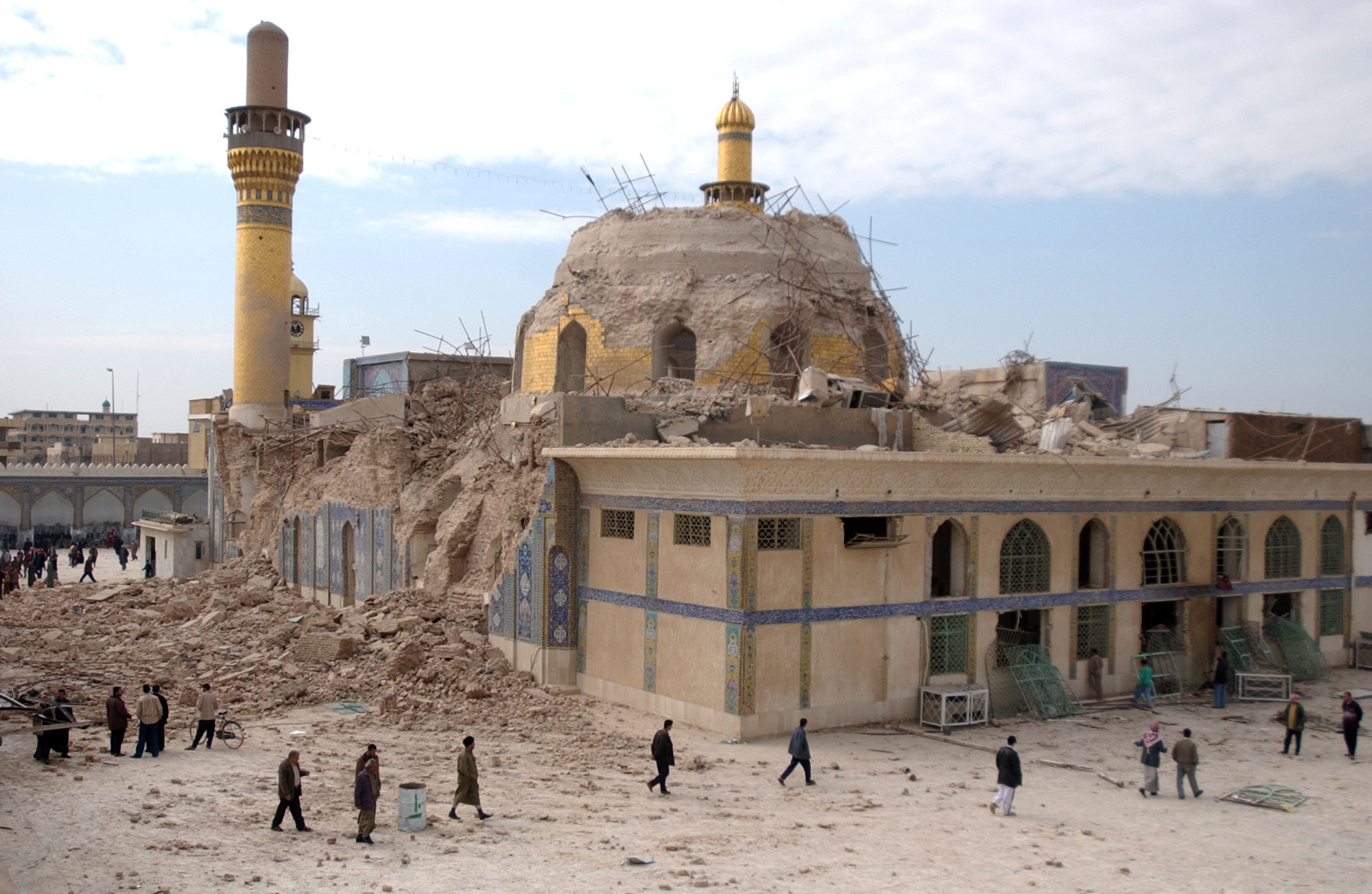
When Secretary of State John Kerry visited Baghdad on Monday, he arrived in a city bracing for war with the brutal fighters of the Islamic State of Iraq and Syria (ISIS), who have taken control of Iraq’s north and west.
The fall of Baghdad to ISIS would be a disaster. But U.S. officials call that scenario unlikely, thanks to the city’s vast size and the hostility of its large Shi’ite population towards to Sunni ISIS. It does appear that ISIS’s lightning offensive has stalled out north of the capital.
That’s why U.S. officials are now anxiously focused elsewhere, on a thousand-year-old sacred site in Samarra, a city 80 miles north of Baghdad now mostly controlled by ISIS.
“Clearly, everyone understands that Samarra is an important line,” Kerry said in Baghdad. “Historically, an assault on Samarra created enormous problems in Iraq. That is something that we all do not want to see happen again.”
Kerry was referring to the events of Feb. 22, 2006, when members of al-Qaeda in Iraq, a group that later morphed into ISIS, infiltrated Samarra’s al-Askari mosque. After tying up sleeping guards inside, the fighters planted bombs that destroyed its famous gilded dome. That savage act of religious vandalism “started Iraq’s slide into civil war,” a senior Obama Administration official said—one that U.S. officials fear could be re-ignited again today.
Back then, the bombers’ design was chillingly sinister. Also known as the Golden Dome Mosque for the resplendent coat added to the ancient structure’s teardrop-shaped dome a century before, al-Askari is one Shi’ite Islam’s holiest sites. Built in 944, it not only houses the tombs of two 9th-century Shi’ite imams but is said to stand near a supernatural site: a tunnel into which their descendent, Muhammad al-Mahdi, who is known as the 12th Imam, disappeared into occultation in 878. Most Shi’ites believe this so-called Hidden Imam, or Mahdi, will one day reappear as a messiah and bring salvation to Shiite believers.
The mosque’s bombing shattered a relatively optimistic moment for Iraq, following the country’s successful December 2005 elections. The bombs which reduced the mosque’s upper exterior to a pile of rubble and twisted metal killed no one. But the explosion probably led to the slaughter of thousands—which was exactly the plan. The leader of al-Qaeda in Iraq at the time, the notoriously murderous Abu Musab al-Zarqawi, pursued the explicit goal of a nationwide religious civil war.
His sadistic plan’s success was soon easily measured in blood. Some Shi’ites called the attack their 9/11. “Within hours, spontaneous sectarian killing broke out through most of Iraq,” General Stanley McChrystal, then a senior U.S. commander in Iraq, recalled in his 2013 memoir. “Thousands of [Shi’ite] men gathered… in [Baghdad’s heavily Shi’ite] Sadr City, loading onto the back of flatbed trucks and slinging weapons. Sunni mosques were torched or strafed with bullets.”
McChrystal estimates that a thousand Iraqis were killed in the next five days, and says the ensuing months brought widespread massacres and torture: “Sunni bodies were found with their kneecaps drilled hollow, while severed heads of Shia were carefully spotted for public view.”
Memories of that hideous time in Iraq explains why Obama officials are so alarmed by the presence of ISIS in Samarra. It was only thanks to prompt mid-June counterattacks by Iraqi security forces—with the help of Asaib Ahl al-Haqq, an Iranian-backed Iraqi Shi’ite militia—that ISIS fighters didn’t overrun the mosque, which they surely would have destroyed. The area of Samarra around al-Askari is now heavily fortified. But ISIS remains inside the majority-Sunni city of about 350,000, and has reportedly been lobbing mortar shells at al-Askari, whose dome was restored in 2009, along with a pair of minarets also bombed in 2007.
Like Zarqawi’s al-Qaeda in Iraq before them, “ISIS intends to trigger a full-fledged civil war in Iraq,” says Ahmed Ali of the Institute for the Study of War. “For ISIS, the fastest mechanism to trigger the civil war would be by targeting the al-Askari shrine in Samarra and other shrines in Iraq. In essence, ISIS seeks to replicate the post-shrine attack environment of 2006.” Ali says Iraq’s Shi’ites have shown notable restraint in the face of ISIS’s provocations thus far, but adds that “the consequences of an attack on the shrine will be grave.”
The al-Askari mosque is just one of several precious Shi’ite holy sites now under heavy guard. Ali says the Iraqi government is concerned about Kadhmiyah shrine in Baghdad and the Sayyid Mohammed shrine in the town of Dujail in northern Baghdad, which are more accessible to ISIS than holier sites in Karbala and Najaf, both south of Baghdad.
In remarks earlier this month, the spiritual leader of Hezbollah, Hassan Nasrallah, said that his group, which is already defending Shi’ite holy sites in Syria, might join the emerging fight in Iraq. “We are ready to sacrifice martyrs in Iraq five times more than what we sacrificed in Syria, in order to protect shrines, because they are much more important than [the holy sites in Syria],” Nasrallah reportedly told an audience.
The 2006 bombing of the Golden Dome Mosque in Samarra produced a horrific civil war with Iraq. But if ISIS manages to strike again at al-Aksari, or any one of several other Shi’ite holy sites in Iraq, the result could be an even wider conflict involving Iran and Hezbollah.
And that is something, as John Kerry put it, that we all do not want to see happen.
More Must-Reads From TIME
- The 100 Most Influential People of 2024
- Coco Gauff Is Playing for Herself Now
- Scenes From Pro-Palestinian Encampments Across U.S. Universities
- 6 Compliments That Land Every Time
- If You're Dating Right Now , You're Brave: Column
- The AI That Could Heal a Divided Internet
- Fallout Is a Brilliant Model for the Future of Video Game Adaptations
- Want Weekly Recs on What to Watch, Read, and More? Sign Up for Worth Your Time
Contact us at letters@time.com